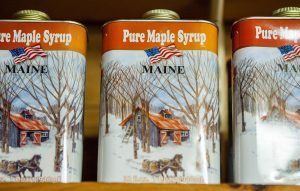Maple Food Safety Planning Resource Hub
 Creating a food safety plan can help you maintain high-quality production and can help you when training new employees. This model food safety plan for maple is based on the recommendations made in the U.S. Food and Drug Administration’s Guide to Minimize Microbial Food Safety Hazards for Fresh Fruits and Vegetables (PDF), on the 2011 Food Safety Modernization Act and on industry recognized food safety practices.
Creating a food safety plan can help you maintain high-quality production and can help you when training new employees. This model food safety plan for maple is based on the recommendations made in the U.S. Food and Drug Administration’s Guide to Minimize Microbial Food Safety Hazards for Fresh Fruits and Vegetables (PDF), on the 2011 Food Safety Modernization Act and on industry recognized food safety practices.
Do you need a written food safety plan? The Food Safety Modernization Act Final Rule went into effect in January 2016 and will require some amount of record keeping and written documentation that you are producing safe food products. Maple sap must be extensively boiled to produce syrup. This boiling creates a product with a reduced water activity of 0.83-0.86 and acts as an inherent control for foodborne pathogens. The process of making maple syrup and maple candy is considered low risk by the FDA.
The maple industry is unique in that individual producers are both “growers” and “processors” and even though considered low risk must follow GAP or Good Agricultural Practices and cGMP or Current Good Manufacturing Practices. Both GAP and cGMP have been updated with the implementation of the Food Safety Modernization Act (FSMA).
This plan was adapted with permission from the work of Dr. Luke F. Laborde of Pennsylvania State University.
Basic Sample Maple Food Safety Plan (PDF)
Written food safety plans should describe day-to-day activities required by workers to control food safety hazards. They should detail who, when, what/how, corrective actions and are performed and recorded. GMP practices should be reviewed annually to ensure they remain up-to-date and are preventive.
Checklists and Forms to Document GAP and GMP
General information
- Pre-Harvest Risk Assessment (PDF)
- Worker Training Log (Word) (Cornell University)
- Employee Food Safety Training Log (PDF)
Sugarbush
Syrup Production
- Equipment Tools and Utensils List (PDF)
- Water Source Testing (PDF) (Rutgers University)
- Water Treatment Log for RO (PDF)
- Pest/Rodent Control Log (Word) (Cornell University)
- Cooler Temperature Log (Word) (Cornell University)
- Illness/Injury Reporting Log (Word) (Cornell University)
- First Aid Kit Monitoring Log (Word) (Cornell University)
- Visitor Log (Word) (Cornell University)
- Restroom Cleaning and Restocking Report (PDF)
Syrup Packing
- Annual Syrup Production Packaging Record (Excel)
- Traceability and Mock Recall Exercise Log (PDF)
- Buyer Contact List (PDF)
Storage and Transportation
Resources
- FSMA Human Food Audit Checklist
- Rutgers On-Farm Food Safety Publications page – Additional checklist forms that may be useful in your operation
- Penn State Extension: Write a Food Safety Plan
- Cornell University: National Good Agricultural Practice Program: Farm and Packinghouse Record Keeping Sheets
- USDA: Good Agricultural Practices Audit Programs
- U.S. Food and Drug Administration:
This work is/was supported by the USDA National Institute of Food and Agriculture, RREA project 228285.
